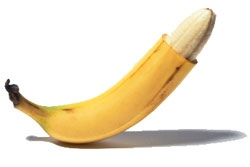- Introduction to male circumcision
- When circumcision should and should not be done
- What age is circumcision done?
- Male circumcision procedure
- Complications associated with male circumcision
- Post circumcision care
Introduction to male circumcision

When circumcision should and should not be done
Male circumcision is not performed routinely for any medical conditions. However, there are a number of conditions affecting the genitals of adult men which circumcision is sometimes used to treat.
Conditions which circumcision might be used to treat
Phimosis is a condition where the foreskin is constricted and cannot be pulled back over the head of the penis (glans). This condition can be treated with medication, but men who fail to respond to these medications are usually circumcised.
However, note that during childhood (until about 5 years old) the foreskin can usually not be pulled back over the glans, because the glans and foreskin have not yet separated.
Balanoposthitis is a recurrent type of infection known as balanitis. It causes inflammation of the glans of the penis. Balanitis affects 3-4% of boys. Around 1% of boys will be affected by recurring balanoposthitis infections, and circumcision is usually done in these recurrent cases. The condition may also affect adults and circumcision is also used to treat men with balanoposthitis.
Paraphimosis is a rare condition in which the foreskin gets stuck in its retracted position, that is, after the foreskin is pulled back over the glans of the penis, it cannot be replaced to its usual position. It causes painful constriction of the glans. In boys, this usually occurs because the foreskin is pulled back using too much force. In adult males, the condition is most prominent in elderly men, and particularly those who have used a catheter at some stage in their life. Doctors will usually try to manipulate the foreskin back over the glans, while the individual is under anaesthetic. When this doesn’t work, the boy or man is usually circumcised.
Circumcision cannot be performed for some men and boys (whose parents may wish to have them circumcised for non-medical reasons), for example because their penis is abnormally shaped.
Circumcision cannot be performed on males with the following conditions:
- Congenital abnormalities of the penis including where the urethra opening is not on the penis tip (hypospadias or epispadias);
- Chordee, or the downward curvature of the penis, resulting from either congential abnormalities or infection;
- Buried penis is a condition in which the penis is concealed because it is surrounded by fat in the pubic region;
- Sick or unstable babies;
- Bleeding disorders or a family history of such.
Circumcision should not be performed without a qualified health professional and a sanitary environment.
What age is circumcision done?

When a circumcision is indicated for medical reasons, the circumcision will typically be performed during adulthood, following the onset of sexual activity.
Male circumcision procedure
Before performing circumcision, a doctor will ask someone to sign a form to indicate that they agree to the circumcision procedure. This will be either:
- the adult male being circumcised; or
- the parents of a boy who has not reached the age of legal consent.
Before asking a man or parents to sign a consent form, the doctor will provide up to date, scientific information about the health risks and benefits associated with circumcision.
Men who are being circumcised should also be aware that that wound healing following circumcision typically takes six weeks and complete abstinence from all forms of sexual arousal is necessary in that period to avoid an erection. Erections during the wound healing phase can be painful and interfere with the healing process.
Before surgery begins, the genital area will be thoroughly cleaned using a surgical scrub preparation, but the pubic hair will not be cut or shaved. Sterile clothes are often draped over the body so that only the penis is exposed. The doctor will also examine the man’s penis to ensure he has no conditions which contraindicate circumcision.

There are a number of methods a doctor can use to anaesthetise a newborn baby. These are:
- Application of anaesthetic cream to the foreskin;
- Dorsal penile nerve block: an anaesthetic which is applied to the nerve which controls feeling in the penis. The nerve is known as the dorsal nerve and found at the base of the penis);
- Penile ring block: a procedure in which anaesthetic is injected under the skin of the penis, at a number of points around the circumference;
- Caudal epidural block: an anaesthetic which is injected directly into the spine and affects the whole body.
Combining these anaesthetics with painkillers like paracetamol before and after the operation, provides the most effective pain relief.
In Australia, circumcision of babies older than six months and boys is generally performed under general anaesthetic, with a regional block (i.e. a dorsal nerve or ring block).
Adult men can be circumcised using a dorsal nerve block. A ring block may also be used for additional pain relief.

- The glans and foreskin are separated to fully expose the coronal groove (the ridge that defines the glans of the penis). This step is only performed for young boys, when the glans and the foreskin have not fully separated;
- Any smegma is removed. Smegma is a white pasty substance made up of dead cells which previously held the foreskin and glans together;
- The foreskin is replaced in its normal position (i.e. covering the glans);
- A ventral surface, that is a cut in the foreskin on the upper side of the penis, is made using scissors;
- A second slit is made on the underside of the penis;
- The foreskin is cut away around the rim of the coronal groove;
- The edges of the foreskin are pulled back;
- Blood vessels are tied off using absorbable stitches or by diathermy, which is a procedure in which an electrical current is used to heat the ends of the blood vessels;
- The edges of the foreskin are stitched.
Following the procedure a dressing which goes around the penis is not applied, as the glans may become damaged if it swells while there is a bandage around it.
There are a range of specific methods of circumcision which are usually named after the specialist surgical equipment used for the procedure. The above steps therefore vary slightly depending on which method of circumcision is chosen.
Methods for circumcising baby boys
There are three methods which are commonly used to circumcise baby boys. They are:
- Plastibell method;
- Gomco Clamp method; and
- Morgan clamp
Plastibell method for circumcising babies

Once the correct size bell has been selected, the foreskin is retracted and a device known as a haemostat, which controls bleeding, is placed on each side of the foreskin. The Plastibell is then placed over the glans and secured around the rim with string. The handle of the Plastibell device is then removed. The Plastibell will eventually fall away as the skin to which it is attached dies.
Research has shown that the older the boy at the time of circumcision, the longer the Plastibell takes to fall off. For example one recent study reported the average time for the Plasitbell to fall off was on average 8.7 days for babies less than three months old, but 16.8 days for boys over five years.
Minor complications also commonly arise following Plastibell circumcision and the most common complication is when the Plastibell becomes wedged into the penis (known as impaction) and fails to fall off spontaneously. Complications of this type occurred in 6.1% of procedures in one study, and were more common in older boys. For babies under three months 2.3% experienced Plastibell impaction, whereas for boys over five years Plastibell impaction occurred in 26.9% of cases. Complications of Plastibell impaction are also more likely if the wrong size Plastibell is used.
Gomco clamp method for circumcising babies and boys

Once a slit has been made in the foreskin on the upper side of the penis, a Gomco bell of the correct size is placed over the glans and the foreskin is drawn over the bell. The bell is then inserted into a circular opening in the base plate of the Gomco clamp. The bell is drawn up into the clamp until the open end, surrounded by foreskin, is fitted in the opening. The clamp is then tightened, crushing the skin between clamp and bell. The foreskin is cut away using a scalpel.
The clamp is then left in place for five minutes to allow blood to coagulate. Antiseptic is applied to the wound. If bleeding occurs, the wound is cleaned, but stitches are generally not necessary.
Methods for circumcising adult men
There are a range of techniques used for circumcising adult men, including the dorsal slit method and the sleeve method.
Dorsal slit method for circumcising adult men
The dorsal slit technique is recommended when circumcision is indicated for phimosis or paraphimosis. The procedure is carried out as described above, and no specialist circumcision equipment is used.
Sleeve method for circumcising adult men and boys
The sleeve method of circumcision is suitable for use in boys and men. It differs from the procedure described above, in that the foreskin is removed from its retracted position (i.e. the foreskin is not pulled back over the glans before circumcision).
Complications associated with male circumcision

Other complications include:
- Pain;
- Swelling;
- Hematoma formation (swelling caused by a blood clot);
- Complications of anaesthesia;
- Poor cosmetic results;
- Tearing of stitches before healing is complete, which most commonly occurs as a result of erection;
- Injury to the urethra (through which urine is transported);
- Removal of excessive skin; and/or
- Removal of insufficient skin.
Rare complications include:
- Changes in sexual function, however the direction of the change is controversial, with some studies reporting greater sexual dysfunction in circumcised men and others reporting reduced sexual dysfunction in circumcised men.
Very rare complications include:
- Amputation of the penis.
Death has also been reported as a result of bleeding or systemic infection following circumcision. While most reports of death are from places where circumcision is performed in unsanitary conditions by non-medical practitioners, a number of recent deaths in developed countries have also occurred.
Post circumcision care
A dressing which surrounds the entire circumference of the penis should not be applied.

Following circumcision, men should wear loose fitting briefs and clean the wound daily for 5-7 days. After a week the patient should recommence normal hygiene practices (i.e. washing the wound in the shower).
Men must avoid any kind of sexual arousal for six weeks following the surgery, as an erection is likely to interfere with the wound healing process.
It is common for men to experience erections during their sleep. In the period immediately following circumcision this may cause some discomfort because the stitches are pulled when the penis becomes erect. This discomfort is normal and men should not worry about it. It will settle down one or two weeks after the operation.
For more information
 |
For more information on issues relating to this procedure, see Circumcision |
References
- Marieb E, Hoehn K, Anatomy and Physiology. 3rd ed. Benjamin Cummings; 2008.
- The Royal Australasian College of Physicians- Paediatrics and Child Health Division. Policy Statement on Circumcision. 2004. [cited 2009, June 15] Available from: http://www.racp.edu.au/page/health-policy-and-advocacy/paediatrics-and-child-health
- Weiss, H.A. Thomas, S.L. Munabi, S.K. Hayes, R.J. Male circumcision and risk of syphilis, chancroidand genital herpes: a systematic review and meta-analysis. Sex Trans Inf. 2006;82:101-10.
- Vincent, L. Boys will be boys: traditional Xhosa male circumcision, HIV and sexual socialisation in Contemporary South Africa. Culture, Health and Sexuality. 2008;10(5):431-46.Cold, C.J. Taylor, J.R. The prepuce. Br J Urol. 1999;83(S1):34-44.
- Moses, S. Bailey, R.C. Ronald, A.R. Male circumcision: assessment of health risks and benefits. Sex Trans Inf. 1998:74:368-73.
- Holman JR, Stuessi KA. Adult circumcision. Am Fam Physician. Mar 15 1999;59(6):1514-8.
- Peleg D, Steiner A. The Gomco circumcision: common problems and solutions. Am Fam Physician 1998;58:891-8.
- Holman, J.R. Lewis, E.L. Ringler, R.L. Neonatal circumcision techniques. Am Fam Phys. 1995;52(2):511-8.
- Rogers, D. Plastibell Circumcision. Continuity Clinic Notebook. 2004 [cited 2009, July 28], available from: http://www.mcg.edu/pediatrics/CCNotebook/chapter2/circumsion.htm
- Samad, A. Khandzada, T.W. Kumar, B. Plastibell circumcision- a minor surgical procedure of major importance. J Pediat Urol. 2009 In press. [cited 2009, July 28], available from: http://www.ncbi.nlm.nih.gov/pubmed/19525148
- Bode, C.O. Ikhisemojie, S. Ademuyiwa, A.O. Penile injuries from proximal migration of the plastibell circumcision ring. J Pediat Urol. 2009. In Press [cited 2009, July 28] available from: http://www.ncbi.nlm.nih.gov/pubmed/19570722
- World Health Organisation. Manual for male circumcision under local anaesthesia. 2008. [cited 2009, October 29]. Available from: http://www.who.int/hiv/pub/malecircumcision/local_anaesthesia/en/index.html
All content and media on the HealthEngine Blog is created and published online for informational purposes only. It is not intended to be a substitute for professional medical advice and should not be relied on as health or personal advice. Always seek the guidance of your doctor or other qualified health professional with any questions you may have regarding your health or a medical condition. Never disregard the advice of a medical professional, or delay in seeking it because of something you have read on this Website. If you think you may have a medical emergency, call your doctor, go to the nearest hospital emergency department, or call the emergency services immediately.







